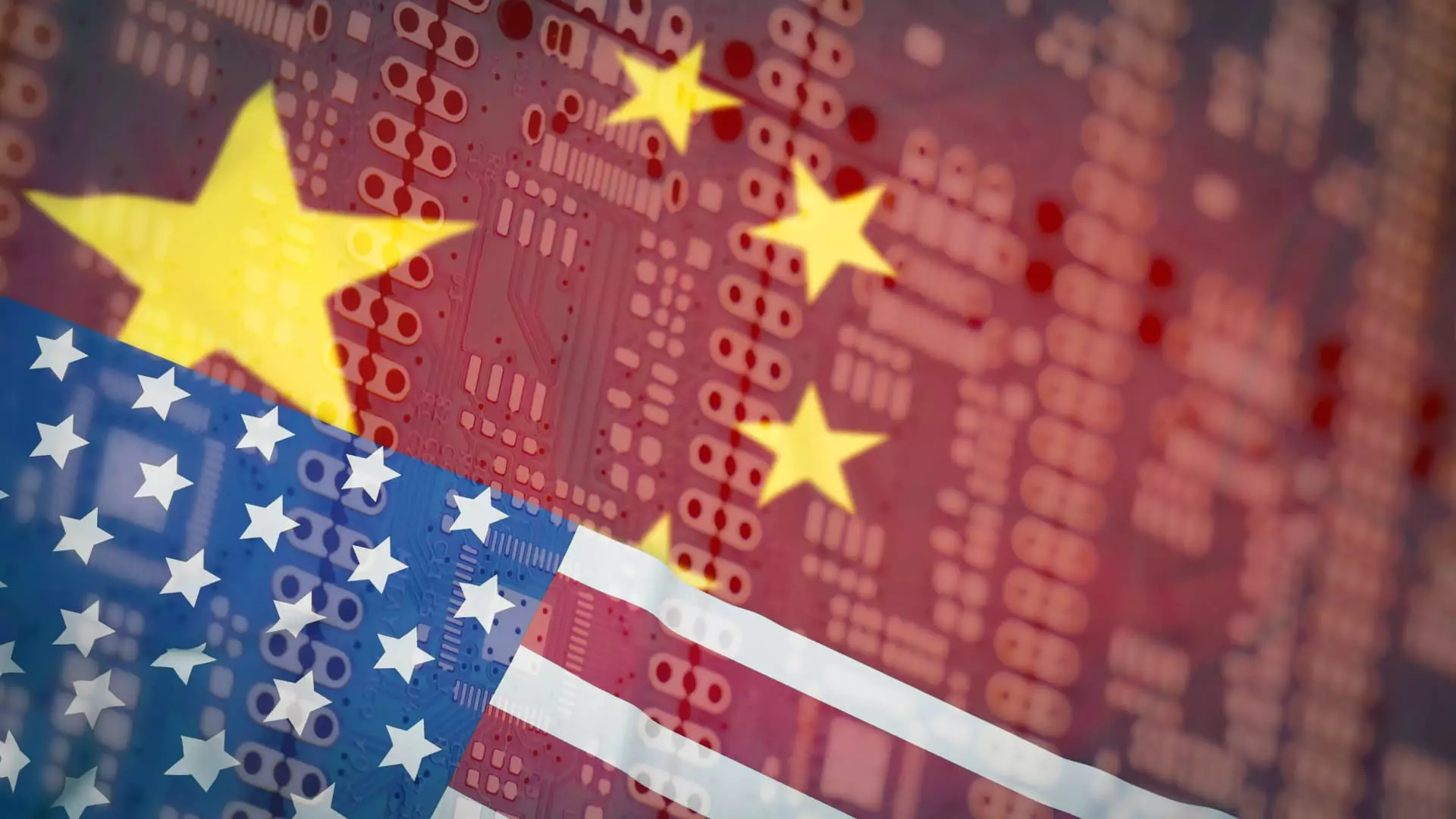In the rapidly shifting landscape of artificial intelligence (AI), Chinese technology behemoths Tencent and Baidu are making headlines with their adaptive strategies in the face of tightening semiconductor exports from the United States. As the U.S. implements more stringent regulations under the Biden administration—despite the rollback of previous policies by former President Trump—Chinese firms are demonstrating resilience and innovation. The narrative surrounding these companies showcases their proactive approach, which could redefine the dynamics of global AI development.
Stockpiling for Success
One of the standout strategies employed by Tencent is the strategic stockpiling of semiconductors, particularly graphics processing units (GPUs), pivotal for training their complex AI models. Martin Lau, Tencent’s president, expressed confidence in their inventory, asserting that the company has acquired a “pretty strong stockpile” of these valuable chips. This foresight allows Tencent to maintain a competitive edge, safeguarding against potential supply disruptions caused by export restrictions.
What’s noteworthy is Lau’s assertion that Tencent can achieve substantial AI training results with a smaller number of GPUs than traditionally thought necessary. This efficiency can be attributed to software optimization techniques, allowing the company to maximize the utility of its existing resources rather than merely expending capital on new acquisitions. By focusing on intelligent resource management, Tencent is paving the way for a sustainable approach to AI development that doesn’t rely solely on extensive hardware investments.
Leveraging Domestic Innovations
The conversation takes an intriguing turn when considering the homegrown semiconductor initiatives in China. Both Tencent and Baidu are exploring alternatives to foreign chip imports, such as custom-designed semiconductors available locally. This pivot not only mitigates risk from external regulatory pressures but also showcases the burgeoning capabilities of Chinese semiconductor technology.
Baidu’s Dou Shen, president of the company’s AI Cloud unit, emphasized the significance of what they term a “full-stack” AI solution. By integrating cloud computing infrastructure with proprietary AI models and applications, Baidu exemplifies a comprehensive ecosystem that thrives even when crucial components such as advanced chips are not accessible. This approach illustrates a vital lesson: innovating within constraints can lead to unpredictable breakthroughs.
Software Optimization: The Game-Changer
One of the critical developments highlighted by both companies is the importance of software optimization in enhancing operational efficiency. Both Tencent and Baidu have recognized that merely accumulating hardware is not a sustainable long-term strategy. Instead, they are doubling down on refining their algorithms and software capabilities to make better use of the hardware they already possess.
Baidu’s comment on achieving efficiency improvements with existing GPUs reflects a growing trend in the industry: the ability to do more with less. This trajectory not only cuts costs but also aligns with an eco-friendly ethos, reducing energy consumption. Leveraging this mindset may prove to be a competitive advantage as concern over the environmental impact of massive data centers grows globally.
Chinese Advancements in Semiconductor Development
While experts acknowledge that China still lags behind the U.S. in advanced GPU and AI chip technology, progress is undeniably underway. China’s commitment to building a self-sufficient semiconductor ecosystem—from materials to chip design—has seen significant strides. Analysts like Gaurav Gupta at Gartner note that while China’s chips may not yet match the caliber of American counterparts, persistent efforts are narrowing the gap and allowing for greater sustainability in supply chains.
The emphasis on domestic chip manufacturing and innovation positions Chinese firms to weather external pressures more successfully. The resilience reflected in Tencent and Baidu’s endeavors signifies not just adaptation but a potential leap towards future leadership in the AI sector, capitalizing on homegrown innovation.
Strategic Ambiguities in the U.S. Market
Interestingly, the push from U.S. executives to reconsider export restrictions indicates a growing acknowledgment that these measures may ultimately backfire. Nvidia’s CEO, Jensen Huang, argued earlier this week that these policies do more harm to American companies than to their Chinese competitors. This perspective raises crucial questions about how the competition should evolve in a globally interconnected market that necessitates collaboration and partnership.
The juxtaposition of Chinese innovation against the backdrop of restrictive policies offers a potent narrative about the future of technology. While the U.S. has traditionally led in terms of advanced technologies, the rise of adaptable and resilient strategies among Chinese firms might signal a transformation in competitive dynamics.
In this evolving story, the focus on innovation—both in the hardware employed and the software developed—suggests a core lesson: the path to leadership in AI is not merely determined by access to advanced resources but rather by the willingness to innovate in unforeseen ways and adapt to changing landscapes.

